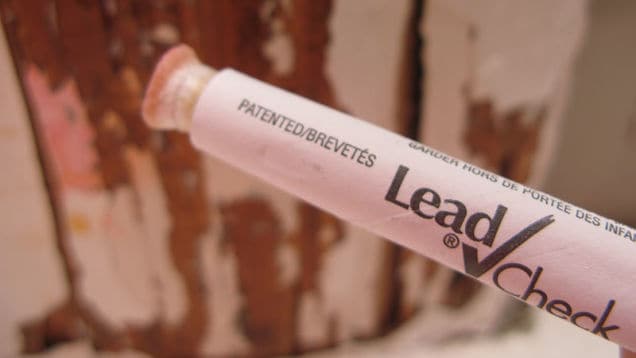DIY Lead Paint Test
If you know it’s there, you can live with it safely
About half of homes in the U.S. have lead paint, which is a serious health risk, particularly if you’re pregnant or have small children. But you can safely live with lead paint. Knowing if you have it is the first step.
How to test for lead paint
Most lead-paint poisoning occurs by exposure to lead dust. Testing the dust will determine if you have a lead hazard. The test kits are available at home centers and hardware stores and include step-by-step instructions for collecting the samples, bags for the samples, plastic gloves and an envelope to send the samples to an EPA-certified lab for analysis. Results, mailed back in about two weeks, will tell if the samples contained a potentially harmful level of lead dust. If you have a dust hazard, contact your local health department for remediation guidelines or contact the Environmental Protection Agency.
Take a sample and send it in
Wipe the test area in a backward “S” pattern with a moist cloth, picking up dust to use as a sample.
Living with lead
Lead paint can only hurt you if it gets into you. Usually that happens when you breathe the dust or get dust on your hands before eating. So the key to living with lead paint is to prevent it from flaking, wearing down or otherwise breaking down into dust or flakes. Lead paint that’s in good condition or covered with coats of non-lead paint generally isn’t a threat.
However, before remodeling or otherwise disturbing painted surfaces, it’s best to have a professional lead inspection and risk assessment done. This will tell if your home has lead-based paint, where it’s located and if it’s hazardous. Find certified inspection firms through your state or local health department.
